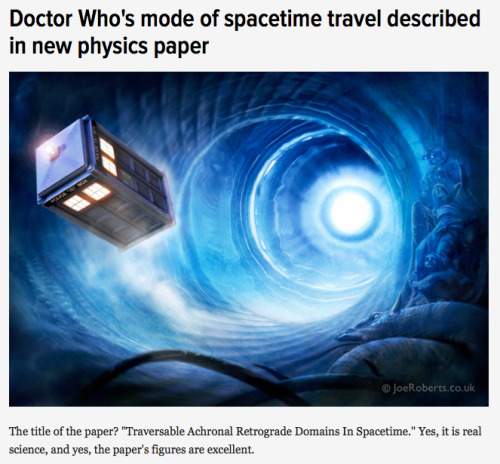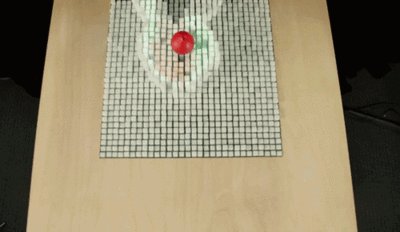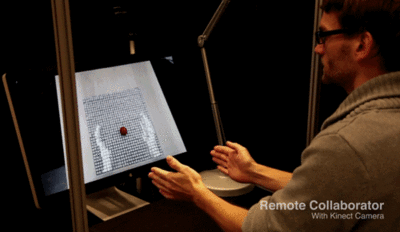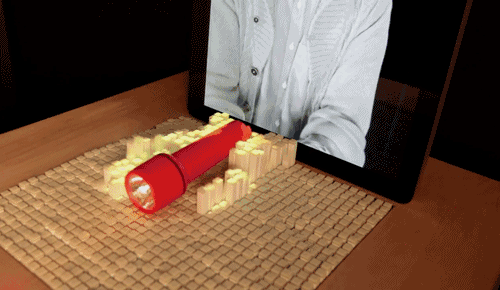Note To Self: Debugging
Note to self: debugging
always remember to remove the Log.d(”Well fuck you too”) lines and the variables named “wtf” and “whhhyyyyyyy” before pushing anything to git
More Posts from Jupyterjones and Others
Everyone who reblogs this will get a pick-me-up in their ask box.
Every. Single. One. Of. You.




Raspberry Multiverse
Stephen Hawking’s Grand design is leading to a non symmetric multiverse. However there is reason to suggest a full symmetric multiverse with point symmetry at the centre of a raspberry shaped pulsating bubble multiverse. For an entangled multiverse, each quantum should have its own 12 fold entanglement relation to all 12 opposite (anti) quantums, each located inside one of the 12 universes. The result is called: Poincaré dodecahedral space symmetry. (see also below: B.F.Roukema) A dodecahedron is also called “Buckyball” An other evidence for space symmetry and the centre of the multiverse is the so called DARK FLOW. Dark flow seems to be found at the edge of the visible universe!! There the “dark flow centre is represented by a so called "Pitch of spacetime”

Six stages of debugging

When 25,000 little dice are agitated in a cylinder, they form into neat concentric circles

Behold the magic of compaction dynamics. Scientists from Mexico and Spain dumped 25,000 tiny dice (0.2 inches) into a large clear plastic cylinder and rotated the cylinder back and forth once a second. The dice arranged themselves into rows of concentric circles. See the paper and the videos here.
https://boingboing.net/2017/12/05/when-25000-little-dice-are-ag.html
How is geometry entangled in the fabric of the Universe?
Geometry can be seen in action in all scales of the Universe, be it astronomical – in the orbital resonance of the planets for example, be it at molecular levels, in how crystals take their perfect structures. But going deeper and deeper into the fabric of the material world, we find that at quantum scale, geometry is a catalyst for many of the laws of quantum-physics and even definitions of reality.
Take for example the research made by Duncan Haldane, John Michael Kosterlitz and David Thouless, the winners of the 2016 Nobel prize in physics. By using geometry and topology they understood how exotic forms of matter take shape based on the effects of the quantum mechanics. Using techniques borrowed from geometry and topology, they studied the changes between states of matter (from plasma to gas, from gas to liquid and from liquid to solid) being able to generate a set of rules that explain different types of properties and behaviors of matter. Furthermore, by coming across a new type of symmetry patterns in quantum states that can influence those behaviors or even create new exotic types of matter, they provided new meaning and chance in using geometry as a study of “the real”.
If the Nobel Prize winners used abstract features of geometry to define physical aspects of matter, more tangible properties of geometry can be used to define other less tangible aspects of reality, like time or causality. In relativity, 3d space and 1d time become a single 4d entity called “space-time”, a dimension perceived through the eye of a space-time traveler. When an infinite number of travelers are brought into the equation, the numbers are adding up fast and, to see how for example, a space-time of a traveler looks for another traveler, we can use geometric diagrams of these equations. By tracing what a traveler “sees” in the space-time dimension and assuming that we all see the same speed of light, the intersection points of view between a stationary traveler and a moving one give a hyperbola that represents specific locations of space-time events seen by both travelers, no matter of their reference frame. These intersections represent a single value for the space-time interval, proving that the space-time dimension is dependent of the geometry given by the causality hyperbola.
If the abstract influence of geometry on the dimensions of reality isn’t enough, take for example one of the most interesting experiments of quantum-physics, the double-split experiment, were wave and particle functions are simultaneously proven to be active in light or matter. When a stream of photons is sent through a slit against a wall, the main expectation is that each photon will strike the wall in a straight line. Instead, the photons are rearranged by a specific type of patterns, called diffraction patterns, a behavior mostly visible for small particles like electrons, neutrons, atoms and small molecules, because of their short wavelength.

Two slits diffraction pattern by a plane wave. Animation by Fu-Kwun Hwang
The wave-particle duality is a handful, since it is a theory that has worked well in physics but with its meaning or representation never been satisfactorily resolved. Perhaps future experiments that will involve more abstract roles of geometry in quantum fields, like in the case of the Nobel prize winners, will develop new answers to how everything functions at these small scales of matter.
In this direction, Garret Lissi tries to explain how everything works, especially at quantum levels, by uniting all the forces of the Universe, its fibers and particles, into a 8 dimensions geometric structure. He suggests that each dot, or reference, in space-time has a shape, called fibre, attributed to each type of particle. Thus, a separate layer of space is created, parallel to the one we can perceive, given by these shapes and their interactions. Although the theory received also good reviews but also a widespread skepticism, its attempt to describe all known fundamental aspects of physics into one possible theory of everything is laudable. And proving that with laws and theories of geometry is one step closer to a Universal Geometry theory.

Co-authored by physicists Ben Tippett* and David Tsang (non-fictional physicists at the fictional Gallifrey Polytechnic Institute and Gallifrey Institute of Technology, respectively), the paper – which you can access free of charge over on arXiv – presents a spacetime geometry that would make retrograde time travel possible. Such a spacetime geometry, write the researchers, would emulate “what a layperson would describe as a time machine“ [x]


#beingacomputerprogrammingmajor : Testing out html scripts on Pokemon Go and finding out it actually works.




-
 thekamiiiworld liked this · 4 years ago
thekamiiiworld liked this · 4 years ago -
 urbanxfantasy liked this · 4 years ago
urbanxfantasy liked this · 4 years ago -
 thousandevilducks liked this · 4 years ago
thousandevilducks liked this · 4 years ago -
 itdobethatbitch liked this · 5 years ago
itdobethatbitch liked this · 5 years ago -
 jupyterjones reblogged this · 5 years ago
jupyterjones reblogged this · 5 years ago -
 taramander liked this · 6 years ago
taramander liked this · 6 years ago -
 gismeda liked this · 6 years ago
gismeda liked this · 6 years ago -
 fast88 liked this · 6 years ago
fast88 liked this · 6 years ago -
 ennuiandirony-blog liked this · 7 years ago
ennuiandirony-blog liked this · 7 years ago -
 amandolanada liked this · 7 years ago
amandolanada liked this · 7 years ago -
 iboss74 reblogged this · 7 years ago
iboss74 reblogged this · 7 years ago -
 iboss74 liked this · 7 years ago
iboss74 liked this · 7 years ago -
 may-or-may-not-be-me liked this · 7 years ago
may-or-may-not-be-me liked this · 7 years ago -
 d4nielp liked this · 7 years ago
d4nielp liked this · 7 years ago -
 zaffrefennec liked this · 7 years ago
zaffrefennec liked this · 7 years ago -
 curiosity-garden liked this · 7 years ago
curiosity-garden liked this · 7 years ago -
 fantasticblazepoetry liked this · 7 years ago
fantasticblazepoetry liked this · 7 years ago -
 rosenrot00-blog liked this · 7 years ago
rosenrot00-blog liked this · 7 years ago -
 svogthos reblogged this · 7 years ago
svogthos reblogged this · 7 years ago -
 kappawaii liked this · 7 years ago
kappawaii liked this · 7 years ago -
 der-programmierer-blog liked this · 7 years ago
der-programmierer-blog liked this · 7 years ago -
 leaflizer liked this · 7 years ago
leaflizer liked this · 7 years ago -
 thoughtsfromaheart liked this · 7 years ago
thoughtsfromaheart liked this · 7 years ago -
 sirstarklb liked this · 7 years ago
sirstarklb liked this · 7 years ago -
 doesntmatters-blog liked this · 7 years ago
doesntmatters-blog liked this · 7 years ago -
 reactorgirl liked this · 7 years ago
reactorgirl liked this · 7 years ago -
 baroquensoul-blog1 liked this · 7 years ago
baroquensoul-blog1 liked this · 7 years ago -
 amethystraine liked this · 7 years ago
amethystraine liked this · 7 years ago -
 lavendercasson liked this · 7 years ago
lavendercasson liked this · 7 years ago -
 picassoossacip liked this · 7 years ago
picassoossacip liked this · 7 years ago -
 asterlove reblogged this · 7 years ago
asterlove reblogged this · 7 years ago -
 kaitiekat reblogged this · 7 years ago
kaitiekat reblogged this · 7 years ago -
 forever-a-duckling liked this · 7 years ago
forever-a-duckling liked this · 7 years ago -
 itscamto liked this · 7 years ago
itscamto liked this · 7 years ago -
 dazzlefrost reblogged this · 7 years ago
dazzlefrost reblogged this · 7 years ago